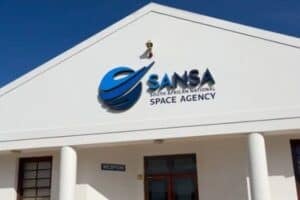Africa's rich astronomy history continues to inspire, and the role of indigenous astronomy in South Africa's astronomy programmes

Minister of Science, Technology and Innovation, Blade Nzimande said strategic collaboration and interventions with leaders in astronomy has enabled the exponential growth of South African astronomers.
Nzimande made the remarks at the International Astronomical Union (IAU) meeting at the Cape Town International Convention Centre (CTICC) on Wednesday.
The IAU general assembly, themed “It’s Time for Africa – Ke Nako”, was hosted for the first time on the African continent in the organisation’s 105-year history.
Watch Blade Nzimande’s address
The Minister of Science, Technology and Innovation, Prof. Blade Nzimande commenced his opening address of the IAU General Assembly 2024 by welcoming all attendees to the South Africa #IAUGA2024 #DSI #ScienceSavingLives #SouthAfrica #Itspossible pic.twitter.com/D8bWSQYABI
— DEPARTMENT OF SCIENCE & INNOVATION (@dsigovza) August 7, 2024
Among some of the world-renowned astronomers who are addressing the assembly include Dr Mae Jemison and Dr Sian Proctor.
South African astronomers
Nzimande officially opened the 32nd IAU assembly addressing 2,000 delegates from the global astronomy community.
He spoke about how Africa’s rich astronomy history continues to inspire, and the role of indigenous astronomy in South Africa’s astronomy programmes.
“Radio astronomy began in South Africa with a 26-metre dish built by NASA and placed in Hartebeesthoek in 1961 as a deep-space ground station used to get data from, and send commands to, many unmanned US space probes going beyond the Earth’s orbit.
Nzimande said in South Africa, the MeerKAT was built in Carnarvon as a precursor to the Square Kilometre Array (SKA project), an international effort to build the world’s largest radio telescope.
“The MeerKAT is another amazing achievement on the global science stage, and we wish to thank our international partners, Germany, Italy and China for their contribution to this project.
Nzimande added that these strategic interventions had enabled the exponential growth of South African astronomers from 60 (only five of whom were radio astronomers) to about 300 over the last 30 years.
In 2022, the Department of Science and Innovation (DSI) and the National Aeronautics and Space Administration (NASA) partnered to build a new deep-space ground station in the country’s semi-desert Karoo region to help track history-making NASA’s missions to the moon and beyond.
ALSO READ: Astronauts to address International Astronomy Union in Cape Town
Africa Astronomy Month
IAU President, Professor Debra Elmegreen, emphasised that astronomy was rooted in all cultures and invited broad thoughts about our place in the universe and on our fragile Earth.
“We celebrate the rich history of astronomy in Africa as we present our research, initiate new collaborations, enjoy networking, share astronomy with the public, and explore the local beauty. August is designated as Africa Astronomy Month, an appropriate cap to the Vision 2024 efforts that have united Africans in their preparations to share astronomy with the world,” said Elmegreen.
Africa is home to some of the world’s oldest astronomical achievements. Astronomy in Africa began at least 7,000 years ago, with a stone circle known as Nabta Playa in Egypt that predates Stonehenge by 2,000 years.
Among many other telescopes in Africa, Professor Elmegreen mentioned the High Energy Stereoscopic System (HESS) gamma-ray telescope in Namibia, as well as the Southern African Large Telescope (the largest optical telescope in the Southern Hemisphere), the MeerKAT radio astronomy array, and the KELT-South and SuperWASP-South telescopes, all of which are located in South Africa.
ALSO READ: WATCH: NASA names astronauts to Next Moon Mission under Artemis






